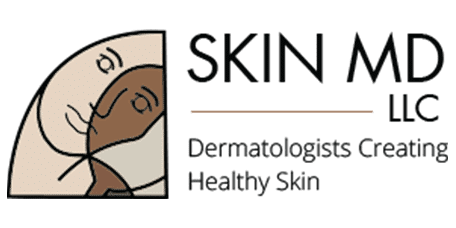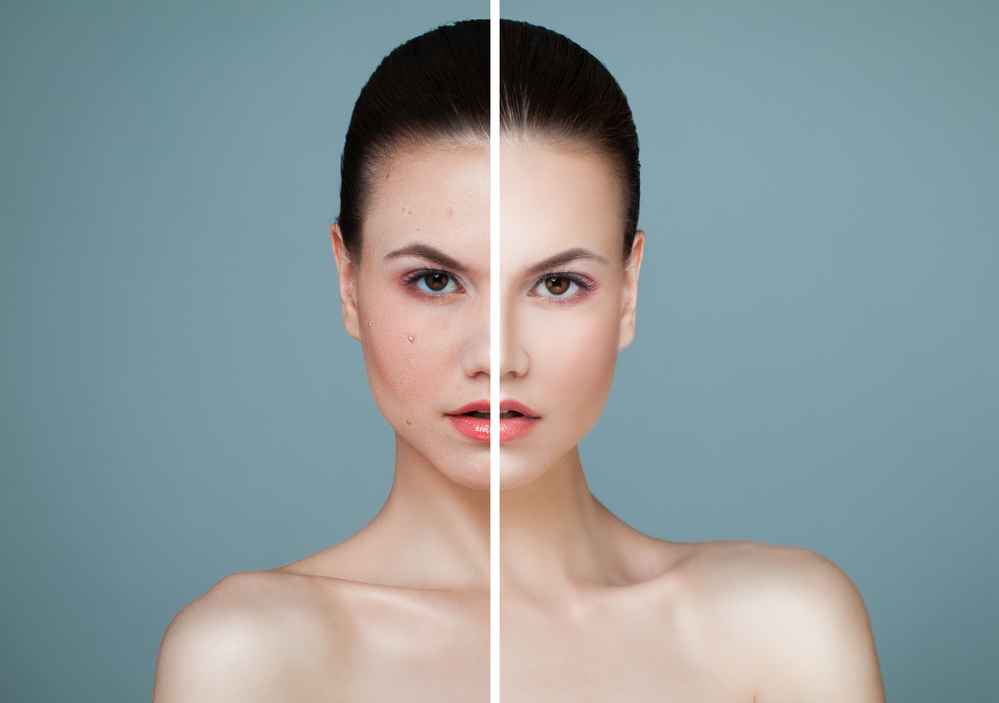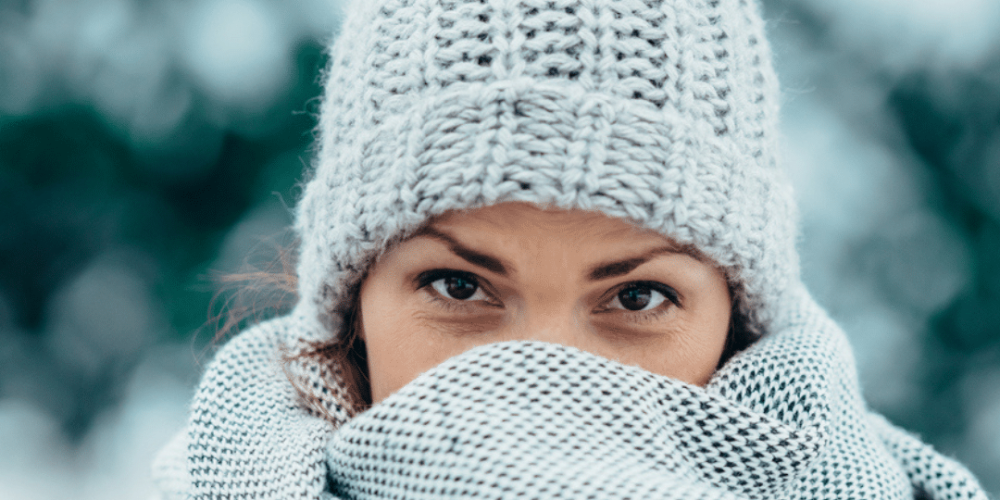The inflammatory skin condition known as Rosacea is not life-threatening and doesn’t require treatment unless it begins to affect your eyes. However, treating this condition can help reduce the redness, pimples, and warm-feeling skin that can cause lowered self-esteem, anxiety, and even depression. Skin MD offers a variety of treatments that can relieve your symptoms and protect your eyes.
What Happens if Rosacea Is Left Untreated?
Many people who suffer from this skin condition put off seeing a doctor until it becomes unbearable or has affected their eyesight. Unfortunately, rosacea does not get better on its own. Even if it appears to go away for a time, this condition is often characterized by flare-ups that can be triggered by a variety of environmental, lifestyle, and biological factors. These flare-ups can last for a few weeks to a few months.
This skin condition often starts out with redness that makes you look like you’re blushing. However, over time, the redness can get worse with each flare-up. Eventually, without treatment, the redness could become permanent.
You might also notice spider veins appearing on your cheeks or be inflicted with acne-like breakouts. You may become more isolated, as many sufferers become reluctant to socialize during flare-ups. In some cases, this condition could even cause vision problems that could become permanent.
Benefits of Treatment
The main benefit of getting treated for this skin condition is because your skin will appear healthier. The redness will reduce, as will the accompanying symptoms of pimples, spider veins, and vision problems. Additionally, an effective personalized treatment plan will help you learn what triggers your flare-ups so you can avoid them as much as possible. This will prevent your symptoms from getting worse with each flare-up. The treatment options are also minimally invasive, which makes them even more attractive.
Another benefit of treatment is that your mental health will improve. When you’re not concerned about the redness and other visible symptoms showing on your face, you can focus on more important aspects of your life. Studies have shown that treatment increases self-confidence in sufferers and reduces the likelihood that they’ll also experience anxiety and depression. With the treatments available to you that have proven effective on this condition, there’s no need to suffer either physically or mentally.
Treatment Options
Skin Care Routine
This type of Rosacea treatment is one that you can do yourself since it involves developing a skincare routine that focuses on keeping flare-ups to a minimum. It’s still a good idea to speak with us about what products are best to use to eliminate the sometimes long process of trial and error. We see patients with this condition frequently so we’re always up-to-date on both break-through and established, reliable products.
There are several steps to creating a successful routine:
Cleanse Your Face Gently Twice a Day
When you have a flare-up, cleansing your face can be uncomfortable since the skin is already irritated. However, it’s important to wash skin that’s prone to this condition twice daily to prevent pores from getting clogged. Use a mild cleanser (not soap) and apply it using your fingers in a light circular motion.
Rinse the cleanser from your face with warm water using your fingers. Be sure to remove all cleansers and pat dry lightly with a soft, cotton cloth.
Moisturize Your Face Every Day
Even if this condition makes your face feel oily instead of dry, as it does for most patients, it’s still important to use a moisturizer every day. The moisturizer keeps the water in your skin from evaporating, which can reduce irritation and discomfort.
Moreover, studies have shown that moisturizer often enhances the results of other treatments, such as medications and laser therapy. Use a non-irritating moisturizer daily to reduce the dryness, roughness, and peeling that can appear with rosacea.
Wear Sunscreen Year-Round
We often think that we only need sunscreen in the summer, but our skin actually needs protection from damaging UV rays all year long. This is especially important for people suffering from this skin condition.
In fact, exposure to the sun is one of the most frequently reported triggers of a flare-up, even for people who have darker skin. Choose a zinc oxide, titanium dioxide, or silicone sunscreen that has an SPF of 30 or higher and does not contain fragrance.
Choose Skin Care Products Carefully
When you have sensitive skin that is susceptible to flare-ups, many skincare products, and makeup items can further irritate your skin. Cleansing your face and using a moisturizer can help reduce the impact that other products have on your skin, but it’s still important for you to choose your skincare products carefully to minimize the chances of triggering a flare-up.
Avoid products that contain the following ingredients:
- Alcohol
- Fragrance
- Menthol
- Urea
- Camphor
- Sodium laurel sulfate
- Glycolic acid
- Lactic acid
Additionally, creams are better than gels or lotions, and never use a toner or astringent on your face, especially if you’re in the middle of a flare-up.
Test Products First
Even if you’re careful about which skincare products you select, you may still be wary of trying new products on your face. Fortunately, testing them before using them on your entire face can help prevent unnecessary discomfort. Take a small amount of the product and put it on a patch of skin near your affected skin, but not on it. If it causes your skin to tingle, sting, or burn, it’s best to avoid that product on your face.
Treat Your Skin Gently
When you have this condition, anything you put on your face can irritate it further. As such, you need to avoid using objects and products that can be rough on your skin. This means you shouldn’t use washcloths, facial sponges, or exfoliants on the skin that is affected by this skin condition. Not only should you not use these items when you’re experiencing a flare-up, but you shouldn’t use them during the time between flare-ups either.
Prescription Medications
There are several prescription medications that have proven to be effective on this skin condition that can provide you with relief from your symptoms. You do have to visit a doctor to get these medicines so that your condition can be evaluated and the best course of treatment can be determined. Moreover, you may need a combination of drugs to alleviate your symptoms, so follow-up appointments will likely be necessary as well.
Topical Medications
Most mild and moderate cases of rosacea are treated with a topical prescription cream or gel that you will apply directly to the affected skin. The two topical drugs that work to reduce redness by constricting the blood vessels in the face are Brimonidine (Mirvaso) and oxymetazoline (Rhofade). You will need to continue to apply these medications to see continual results.
The pimples associated with this condition can be treated by azelaic acid (Azelex or Finacea), metronidazole (Metrogel or Noritate), and ivermectin (Soolantra). It might take some time to see the results from these medications, but you’ll likely see a longer remission time from them than from the medications that are used to control the redness. Ivermectin in particular tends to prevent pimples for a long period of time once it begins to work.
Antibiotics
For moderate or severe cases of this skin condition, we may prescribe an oral antibiotic like doxycycline (Oracea) to help reduce the bumps and pimples associated with flare-ups.
Acne Medications
Severe cases of this skin condition may not respond to either topical drugs or oral antibiotics. If this is the case for you, we may prescribe a powerful acne medication such as isotretinoin (Amnesteem or Claravis) that will help treat the acne-like breakouts that are often a symptom of this condition. It is important that you do not take this drug when you are pregnant because it can cause serious birth defects.
Laser Therapy
At our clinic, we use the excel® V to treat this condition and other conditions such as spider veins, sunspots, and Telangiectasia. This state-of-the-art technology uses a high-powered laser to heat and destroy the abnormal blood vessels and red pigment that are responsible for the excessive redness and spider veins associated with this condition. The pigment absorbs the laser light, which causes them to break down, allowing it to return to a more normal color and tone.
This laser therapy can be customized to each patient’s skin, meaning it’s effective on all skin types and can target both superficial and deeper skin conditions. It also provides continuous cooling throughout the treatment to ensure you remain comfortable during your visit. The laser has a variety of spot sizes, which allow our technicians to precisely treat the treatment area without damaging the surrounding skin. The level of customization makes this laser much more effective than previous laser treatments.
Diagnosis
Unfortunately, there is no test that can diagnose this skin condition. Instead, it is diagnosed through a review of your symptoms, their frequency of occurrence, and an examination of your skin. We may need to conduct some tests to rule out other potential conditions like lupus, psoriasis, or eczema, as their symptoms are often similar in nature to those that appear with this condition. If it’s spread to your eyes, you may need further evaluation by an ophthalmologist.
Triggers
As with most skin conditions, the triggers that may set off a flare-up vary from patient to patient. However, there are some triggers that are more common than others. These include the following environmental, lifestyle, and biological factors.
- Exposure to sunlight
- Heat
- Alcohol, particularly red wine
- Spicy foods
- Stress
- Various skincare and makeup products
- Wind
- Cold air
- Certain medications
- Exercise
- Stress
Before you come in for your consultation with us, keep a diary of your flare-ups and specifically, what you eat, drink, or do before those flare-ups. This way, we can analyze your symptoms and determine what triggers lead to your flare-ups. Just being aware of the factors that can lead to your condition can go a long way in minimizing them. We’ll also use this information to create a personalized treatment plan that is designed to treat your specific condition.
No Cure, But Many Treatments
Currently, there is no cure for this skin condition; however, with the treatments discussed here, you can minimize or even eliminate your symptoms. You may require more than one treatment to fully achieve the results you want, but that’s what we’re here for. We can determine what’s best for your needs so that you regain the confidence you’ve lost due to this condition.
Hope Is Here
You don’t have to suffer from this Rosacea Skin condition any longer. There are effective, safe, and painless treatments available. Contact Skin MD today to learn how to control or eliminate your symptoms and to schedule your initial consultation.



